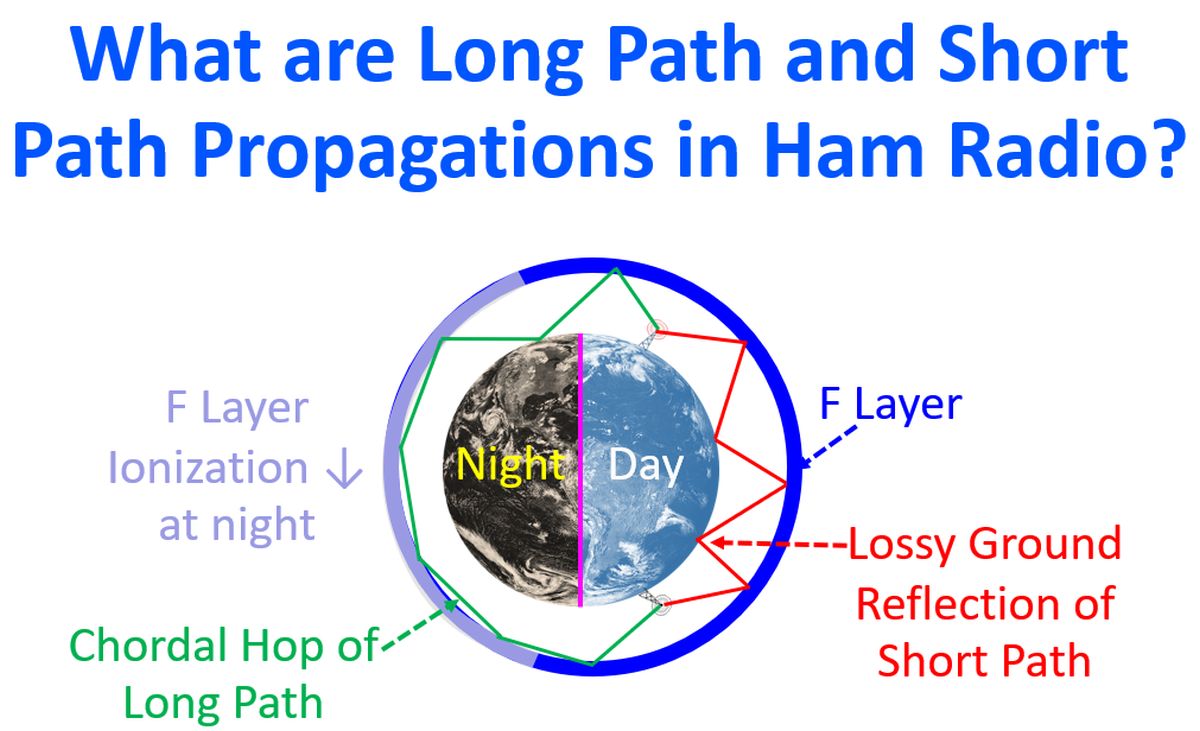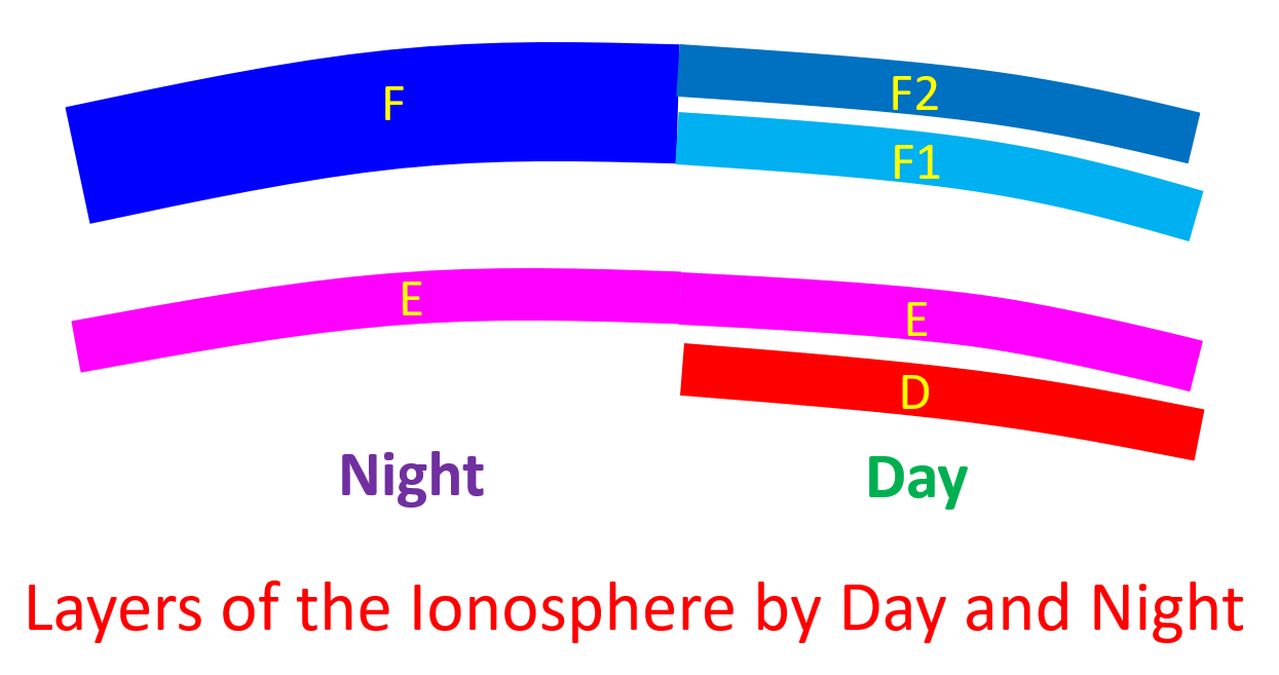What are Long Path and Short Path Propagations in Ham Radio?
What are Long Path and Short Path Propagations in Ham Radio?
Long path and short path are terminologies used during long distance radio communication by Amateur Radio operators. In long path propagation, the directional beam antenna is pointed in the opposite direction as the short path between the two stations on the globe. Grey line propagation discussed earlier, is often along the long path. In short path communication, the radio signal bounces from the F2 layer of the ionosphere to the earth and back to the ionosphere. When multiple such hops are needed to reach the receiving station, there is quite a bit of signal loss as reflection from the ground is lossy. Short path propagation is usually through the day time zone of the globe.

Long path is usally along the night time zone and can occur without too many ground reflections as in case of short path. There are are multiple chordal hops along the ionosphere, which is less lossy than ground reflection. That is how how signal received by long path propagation can be stronger than the short path signal, though the distance travelled may be much larger. This can be quite useful during a contest, allowing contacts not possible with short path propagation. A good knowledge of long path propagation from your geographic region to other regions with timing and regions to which it open can be very useful in terms of multipliers and contest scores.

During daytime the F layer of the ionosphere splits into F1 and F2 layers and fuses back at night, due to decreased ionization. Due to decrease in ionization at night, F layer may not be able to reflect radio signals back to earth. But it may be able to reflect it at a lesser angle, to another region of the ionosphere which could be at a long distance of the order of thousands of kilometers. This is known as a chordal hop. Multiple chordal hops may take the signal across the globe to a daytime region. When it reaches the daytime region, it is reflected back to the earth. This enables very long distance communications at remarkable signal strength as the reflections through the ionosphere is less lossy than ground reflections. Less lossy ground reflections can occur if the reflections are from seawater which contains plenty of salt, which can be there during day time as well.